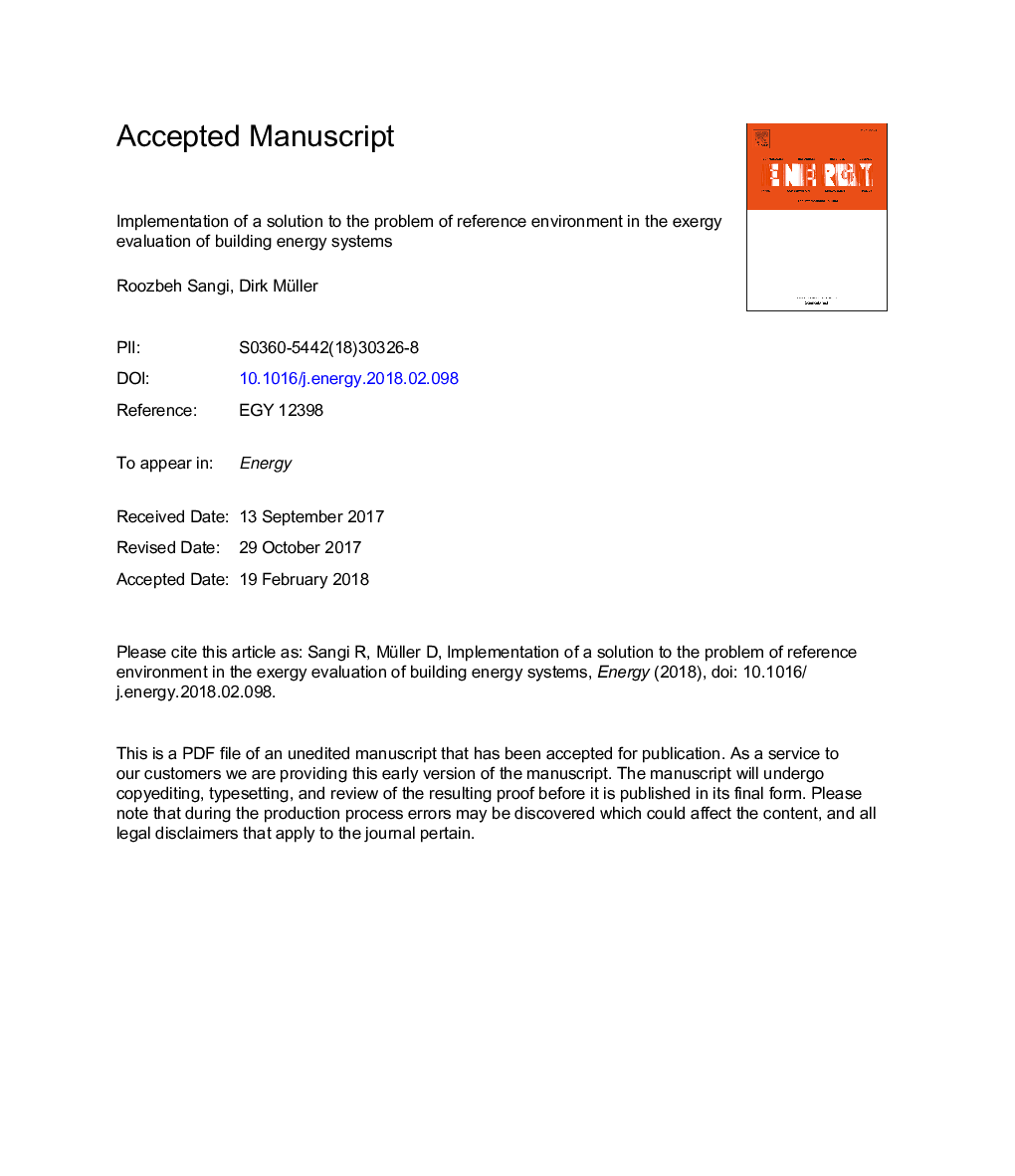| Article ID | Journal | Published Year | Pages | File Type |
|---|---|---|---|---|
| 8071977 | Energy | 2018 | 17 Pages |
Abstract
Exergy analysis is a powerful thermodynamic technique for assessing and optimizing the efficiency of complex energy systems, whose application in building energy systems has recently gained increasing attention. One of the challenges that one faces when evaluating building energy systems from an exergy point of view is the selection of a reference environment. A few solutions to this problem have been proposed. The concept of ideal heat storage, which suggests the idea of associating the Carnot cycle to an ideal heat storage, depicts a new way to set the reference temperature for exergy calculations, but there is still a real need to evaluate the practical application of this approach on a building scale. In this study, this concept is implemented in a test case to investigate the applicability of the approach. For this purpose, the concept of ideal heat storage is applied to a heat pump system, which is analyzed statically and dynamically in both heating and cooling modes, and exergy destruction of the process is calculated. Two different numbers of control volumes are also investigated and compared to the conventional approach. Regardless of the figures, the results show that the proposed approach is applicable in the exergy analysis of building energy systems. The results of both steady-state and dynamic analysis reveal that the application of the ideal heat storage approach leads to a lower exergy destruction in both heating and cooling modes compared to the conventional approach. Moreover, it is noticed that an increase in the number of defined control volumes leads to a decrease of exergy destruction.
Keywords
Related Topics
Physical Sciences and Engineering
Energy
Energy (General)
Authors
Roozbeh Sangi, Dirk Müller,
